
- Definition: Electricity generated by the power of water
- Cost: 5 cents per Kwh
- History: First used to grind corn in prehistoric times
- Biggest Producer: China (22,500 MW)
- Smallest Producer: USA (6,809 MW)
- Methods: Conventional dams, pumped storage, run of the river, tidal power
- Produced in: 150 countries
- Electricity Generation: Accounts for 16% of total global consumption
- Pros: Low cost, sustainable
- Cons: Can sometimes damage ecosystems
- Geography: 7 Countries Produce 90% of their Electricity Using Hydroelectricity
- History: Hydroelectric Power Was First Harnessed in Ancient Greece
- Science: Hydroelectric Power Plants Operate in 3 Different Stages
- History: The First Fully Operational Hydroelectric Power Plant Was at Niagara Falls
- Economy: Hydroelectric Power Is the Cheapest Method of Producing Power Available
- Geography: Damming Rivers to Create Hydroelectric Power Can Mean Aquatic Life is Destroyed
- Geography: The Grand Coulee Dam Is the Biggest Hydroelectric Power Plant in the United States
- Science: Hydroelectric Power Plants Come in 4 Different Sizes
- Science: Hydroelectricity Is One of the Most Flexible Methods of Power in the World
- Geography: A Problem Called Siltation Can Sometimes Hamper Hydroelectric Power Plants
- The World’s Oldest Hydroelectric Power Station Is in England
- The Failure of a Hydroelectric Dam in China Caused the Deaths of 26,000 People
- You Can Only Build Hydropower Plants Where There is a Guaranteed Fast Flow of Water
- Although It Is a Clean Source of Energy, It Can Sometimes Increase Methane Emissions
- One of the Main Advantages Is a Reduction being Co2 in the Atmosphere
- Hydroelectric Power Plants Often Provide Tourist Opportunities
7 Countries Produce 90% of their Electricity Using Hydroelectricity

The first of our hydroelectric power facts tells us that there are seven countries in the world that produce a least 90% of their power through hydroelectricity. Those countries are Norway, Canada, Brazil, New Zealand, Paraguay, Venezuela and Switzerland. In total, 20% of the world’s electricity comes from this kind of power. Despite the fact that there are seven countries that use hydroelectric power as their main energy source, the largest hydroelectric power plant is in China – the Three Gorges Dam.
There are many fascinating historical hydroelectric power facts. Believe it or not, the first quasi-hydroelectric power sources were developed by the Ancient Greeks. Farmers would utilize water power to help grind wheat into flour in mills. A water wheel with a rudimentary bucket system would be placed into the river, and the energy from the flowing water in the river would turn the wheel. This, in turn, was converted into the energy which would run the mill and allow the grinding of the cereals.
Hydroelectric Power Plants Operate in 3 Different Stages
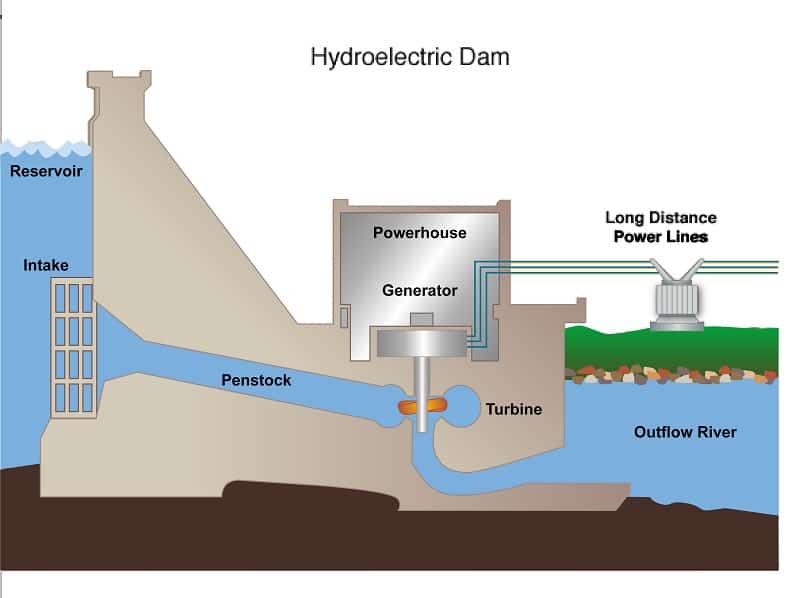
Firstly, you have the place where the electricity is produced, usually called the electricity plant. Secondly, you need a reservoir where vast quantities of water can be stored. Then, finally, a dam is required that can be opened or shut off to control the flow of the water. The water behind the dam will flow in, and push against a turbine. This powers a generator which creates the electricity. The amount of electricity produced depends entirely on how much water is in the system.
The First Fully Operational Hydroelectric Power Plant Was at Niagara Falls
The next of our interesting hydroelectric power facts shows us that the first fully operational hydroelectric power plant was built at Niagara Falls in 1879. By the year 1881, all the street lamps in Niagara itself were powered by this means of electricity.
Hydroelectric Power Is the Cheapest Method of Producing Power Available
Another one of our fascinating hydroelectric power facts is that it is actually the most cost effective way of producing electricity today. This is because once the dam is built and the electricity plant put in place, the only resource needed is water, which is free and renewable. Therefore, so long as there is adequate rain or snowfall during the course of the year, there will always be enough resources to keep it going.
Damming Rivers to Create Hydroelectric Power Can Mean Aquatic Life is Destroyed
For all the good points about hydroelectricity that exist, one of the most concerning negatives is the fact that marine and aquatic life can be destroyed by the dams that are built to help produce the power in the first place. Fish such as salmon can be prevented from swimming upstream to spawn. This is partially solved by the installation of fish ladders in some plants which can help the cause. However, a further problem that exists is that these types of electricity plants can deplete oxygen levels in the water, meaning further difficulties for marine life.
The Grand Coulee Dam Is the Biggest Hydroelectric Power Plant in the United States
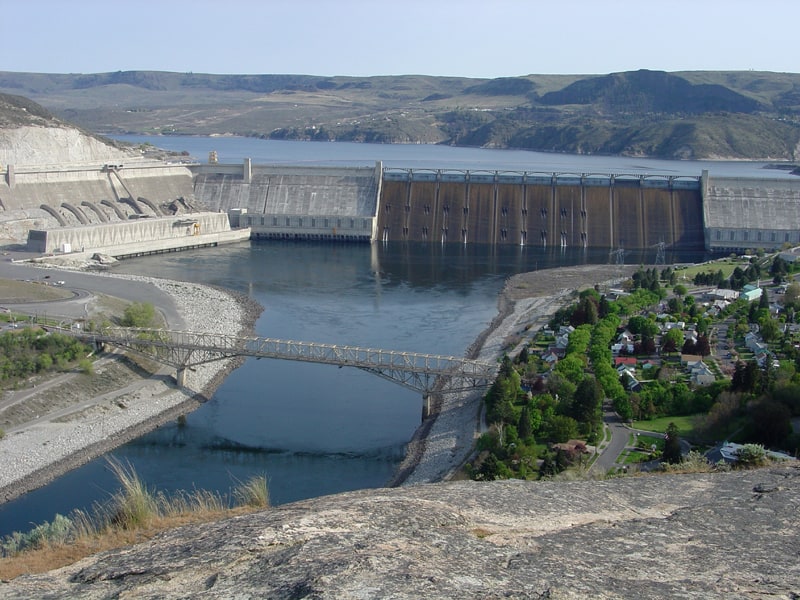
While China might hold the record for having the largest hydroelectric power plant in the entire world, the United States has a big plant of its own, as the next of the hydroelectric power facts tells us. The Grand Coulee Dam is situated on the Columbia River in north Washington. It actually helps to produce and maintain as much as 70% of all the electricity supplied to Washington State as a whole.
Hydroelectric Power Plants Come in 4 Different Sizes
The first of these is known as a small plant. This is a plant that is developed to serve a small community, or perhaps a small-scale industry. These plants will generally generate a capacity of up to 10 megawatts. In larger countries, such as the United States or Canada, they can sometimes go up to 25 megawatts, but no more.
Micro hydropower plants will provide up to 100 megawatts of electricity. These might be used in isolated areas in which there is perhaps only one home or a very small community. They tend to be found in developing countries. The next is pico hydropower, which is used for areas which need up to 5 megawatts of power, but no more. This supply is used where there is no reservoir, but a river instead, from which water can be diverted. Lastly, there is the underground power station, which takes water from reservoirs and channels it under the ground to a generating hall which is constructed in an underground cavern.
Hydroelectricity Is One of the Most Flexible Methods of Power in the World
Another one of the hydroelectric power facts concerns how flexible it is. This is one of its major advantages. Power plants can be ramped up or down depending on demand, usually within a few minutes! In fact, it can sometimes only take between 60 and 90 seconds to power up, which is much speedier than traditional power plants.
A Problem Called Siltation Can Sometimes Hamper Hydroelectric Power Plants
When using a resource like water to produce electricity, there can sometimes be disadvantages. One of these is a process called siltation, which occurs because a river has the ability to send downstream particles which are actually heavier and denser than the actual water itself. Near to dams and reservoirs, this can result in slower flowing water which, in turn, means reduced power supply.
The World’s Oldest Hydroelectric Power Station Is in England
It is situated in a village called Rothbury in Northumberland. It was originally built in the year 1868 at a country house called Cragside. It was installed to help make tasks such as laundry and cooking easier, and was used to heat water and power a rotisserie to roast meats in the kitchen. In addition, the electricity was also used to power an arc lamp in the gallery of the house.
The Failure of a Hydroelectric Dam in China Caused the Deaths of 26,000 People
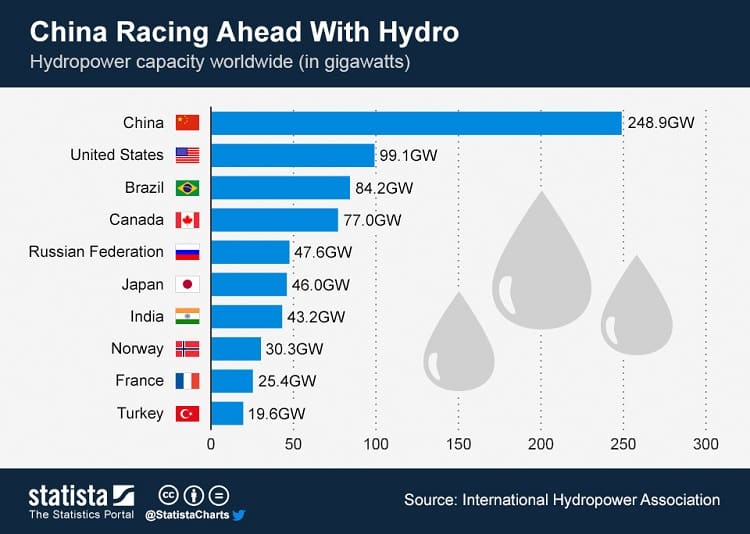
One of the most astonishing hydroelectric power facts is that when the Banqiao Dam in southern China failed in 1975, 26,000 people were killed in the ensuing flood. A further 14,500 people were taken ill in epidemics of water borne illnesses. Although it was difficult to calculate an exact figure, it was thought that many millions of people who lived in the catchment area of the dam were also made homeless.
You Can Only Build Hydropower Plants Where There is a Guaranteed Fast Flow of Water
For instance, you won’t find many hydropower plants in places such as the Midwest of the USA. This is because although they have many rivers and a plentiful water supply, none of the water flows fast enough to support this kind of set-up. In this particular part of the world, there is only one major supplier of hydroelectric power and this is based in Kilbourn, Wisconsin. It has been active for just over 100 years.
Although It Is a Clean Source of Energy, It Can Sometimes Increase Methane Emissions
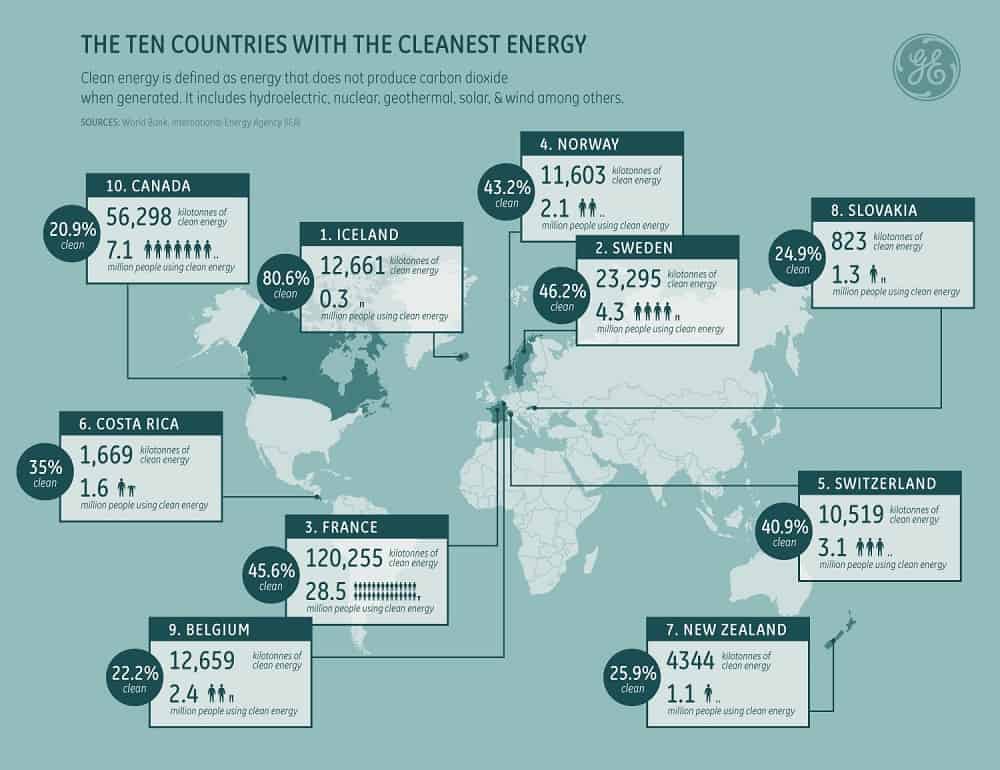
Typically, our hydroelectric power facts have shown us many advantages of a system like this. However, for some areas in the world, it can have a negative impact. In some tropical regions it is reported that hydroelectric sources of power can actually increase methane emissions into the atmosphere. This is because in areas like this there will be more plant material decaying in water. This tends to happen more in areas where reservoirs and dams were built in haste, before a proper clearing of trees and other plant life occurred.
One of the Main Advantages Is a Reduction is Co2 in the Atmosphere
These sorts of plants do not burn fossil fuels, so, while in some areas there may be an increase in methane, for most there will be a significant decrease in Co2 in the atmosphere. This is particularly true for areas in the world with temperate climates, and regions that have regular seasons involving rainfall, snowfall, drier spells and freezes/thaws during the winter – particularly countries like North America, North Asia and most of Europe.
Hydroelectric Power Plants Often Provide Tourist Opportunities
The reservoirs and hydroelectric dams used to create these sorts of power plants are more often than not seen as places for recreation. Many people will use them for water sports such as water skiing, water boarding, swimming and diving. The tourism itself can sometimes end up providing an additional source of income for the local communities the power plant supports.
Hydroelectric Power Facts – Hydroelectricity Facts Summary
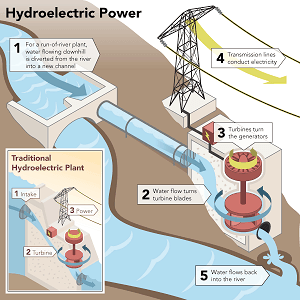 Hydroelectricity facts tell us that this type of power has been in existence since Ancient Greek times. The oldest small scale plant exists in England and was built in 1868. The largest is The Three Gorges Dam in China. This type of power has many advantages, including low costs and low Co2 emissions. However, it can sometimes damage ecosystems and increase emissions of methane in the environment.
Hydroelectricity facts tell us that this type of power has been in existence since Ancient Greek times. The oldest small scale plant exists in England and was built in 1868. The largest is The Three Gorges Dam in China. This type of power has many advantages, including low costs and low Co2 emissions. However, it can sometimes damage ecosystems and increase emissions of methane in the environment.
Was this page helpful?
Our commitment to delivering trustworthy and engaging content is at the heart of what we do. Each fact on our site is contributed by real users like you, bringing a wealth of diverse insights and information. To ensure the highest standards of accuracy and reliability, our dedicated editors meticulously review each submission. This process guarantees that the facts we share are not only fascinating but also credible. Trust in our commitment to quality and authenticity as you explore and learn with us.
